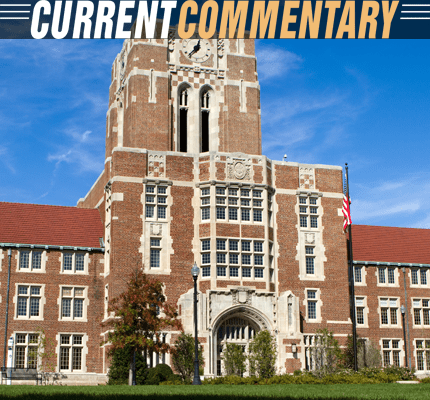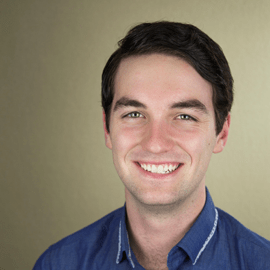
Constitutive Communication: An Introduction and Case Study in Campus Identity
By Clint G. Graves
The scene at The University of Tennessee, Knoxville (UTK), where a sea of protestors came together to voice opposition to hate, was a testament to the power of communication. In response to a lecture by a white supremacist hate group calling itself the Traditionalist Worker’s Party (TWP), the UTK campus was set alight with the chanting voices of students and professors, wishing to express in action what university Chancellor Beverly Davenport told reporters of the event: “‘We didn’t want them here…This is not a place that stands for hate and bigotry and prejudice’” (as quoted in Ohm & Crocker, 2018, para. 4). So, what roles did communication play in this episode? Many. The lecture was a platform for hate speech. The protest was a voice of dissent. But what of Chancellor Davenport? Communication scholars would say that she had practiced a form of constitutive communication.
For largely social and historical reasons, most people in the Western world think about communication as a process of transmitting information between at least two individuals. This view is known as the transmission model of communication. It essentially holds that communication is “the process of intentionally stimulating meaning in the mind of another” (Haas, 2015, p. 28). However, this is not the only way to think about communication. In fact, many scholars have noted that the transmission model drastically oversimplifies communication and affirm instead a popular alternative, called the constitutive model (e.g., Baxter, 2004; Pearce & Cronen, 1980; Sigman, 1992). Instead of portraying communication as merely the transmission of information, the constitutive model posits that communication has power to shape reality itself (Baxter & Montgomery, 1996). As outlandish as that claim may seem, the implications of the constitutive model are borne out in many practical ways.
First, what is constitutive communication? To answer this question, it may be helpful to read a section of Jimmie Manning’s 2014 essay, A Constitutive Approach to Interpersonal Communication Studies. He provides a succinct description of constitutive communication that always seems to help my students understand it. Manning (2014) argues:
Scholars should…[investigate]…how relationships, identities, and tasks are in the communication…rather than simply continuing our current dominant focus on the communication…between two or more people. (p. 432, emphasis mine)
Here, we can see the dichotomy set up between the constitutive and transmission models. I’ll use relationships as an example. The transmission model argues that communication occurs between relational partners. In contrast, the constitutive model argues the relationship exists because of the communication that takes place within it. The relationship is the communication. Taking a moment to reflect, we can some see truth in this. If we never interacted with other people, we could not maintain relationships with them!
Where did this idea come from? Depending on how far back in history you want to go, we could argue that constitutive communication got its start with Isocrates in classical Greece. Isocrates was very attuned to the way speech ordered society—often speaking about how the various Greek city-states should unite under a singular group identity known as “Hellenism” (Bizzell & Herzberg, 2001). Through speech, Isocrates tried to reshape political identity through unification. As a more modern exemplar, Maurice Charland’s (1989) influential essay, Constitutive Rhetoric: The Case of the Peuple Québécois, argues that similar constitutive processes were responsible for the creation of the political identity of the French-Canadian residents of Québec. The constitutive model gets this capacity for creation from its roots in social constructionism, which posits the existence of a “social reality” that is impacted and shaped by human interaction. Unlike material reality (made up of physical matter), social reality is constituted by the talk between people (Baxter & Montgomery, 1996). Returning to the example of relationships, social constructionists would contend that our relationships “exist” in social reality because they are constructed by our communication. Likewise, both Isocrates’ “Hellenic” identity and Charland’s “Québécois” identity are also socially constructed through speech or the public circulation of ideas.
There are many constitutive potentials of communication related to the incident at UTK and Chancellor Davenport’s response to it. On February 17, 2018, the TWP scheduled a lecture event on UTK’s campus. A cursory examination of the group’s website reveals that many of their positions are predicated on anti-Semitic conspiracy theory and race-based bigotry. For example, the group website notes that they desire to “establish an independent White ethno-state” (Self-Determination section, para. 1) and that they “declare war on,” among other things, “international Jewry” (Self-Determination section, para. 3). The group is tapping into a constitutive side of communication to construct their identity. We partly understand who they are by the despicable principles they affirm.
Chancellor Davenport’s series of announcements, circulated throughout the UTK population in response to the TWP’s gathering, represents a use of constitutive communication to combat hate. In one such announcement, entitled “Racism is Not Welcome on Our Campus,” Davenport (2018) constructed the TWP as a “white supremacist group” (para. 1) that “could not be more wrong” (para. 5). She thus positioned herself and the university in opposition to the TWP. She went on to ask UTK students “to change the conversation away from what [the TWP] stand for and toward what we stand for,” namely: “kindness and respect and our responsibility to others” (para. 6). In this announcement, Davenport (2018) identified a common set of beliefs that are oppositional to the TWP’s, around which the UTK community could cohere. Davenport’s cultivation of a campus identity worked in tandem with the efforts of student organizations to galvanize a protest of the TWP gathering. Local news reported that the TWP event drew a paltry 45 people, while the protest of the event more than quintupled that turnout (Ohm & Crocker, 2018).
Davenport played on the constitutive potentials of communication to construct a counter-identity to hate. Students put actions to Davenport’s words and organized within the group identity to challenge the TWP’s hateful ideology. Thus, constitutive communication can be seen as a powerful tool to be used against hate. If we take constitutive communication seriously, then we understand that reality is, in part, shaped by us. The case at UTK demonstrated that an administration can realize the potential of constitutive communication by opening up the space for students to engage in activism. And in our era of renewed civic responsibility, few things could be more powerful.
References
- Baxter, L. A. (2004). Relationships as dialogues. Personal Relationships, 11, 1-22. doi: 10.1111/j.1475-6811.2004.00068.x
- Baxter, L. A., & Montgomery, B. M. (1996). Relating: Dialogues and dialectics. New York, NY: Guilford.
- Bizzell, P., & Herzberg, B. (Eds.) (2001). The rhetorical tradition: Readings from classical times to the present. (2nd ed.). Boston, MA: Bedford/St. Martin’s.
- Charland, M. (1987). Constitutive rhetoric: The case of the Peuple Québécois. The Quarterly Journal of Speech, 73, 133-150. doi: 10.1080/00335638709383799
- Davenport, B. (2018, February 7). Racism is not welcome on our campus [Web log post].
- Haas, J. W. (2015). Public speaking in a global context. (2nd ed.). Plymouth, MI: Hayden-McNeil.
- Manning, J. (2014). A constitutive approach to interpersonal communication studies. Communication Studies, 65, 432-440. doi: 10.1080/10510974.2014.927294
- Ohm, R., & Crocker, B. (2018, February 17). White nationalist talk at UT draws about 45 and 250 protestors for peaceful event. Knox News.
- Pearce, W. B., & Cronen, V. E. (1980). Communication, action, and meaning: The creation of social realities. New York, NY: Praeger.
- Sigman, S. J. (1992). Do social approaches to interpersonal communication constitute a contribution to communication theory? Communication Theory, 2, 347-356.
- Traditionalist Worker Party. (n.d.). 25 points.
Online Resources
Media Resources: Issue Experts
- John Haas, The University of Tennessee, Knoxville
- Jimmie Manning, Northern Illinois University


